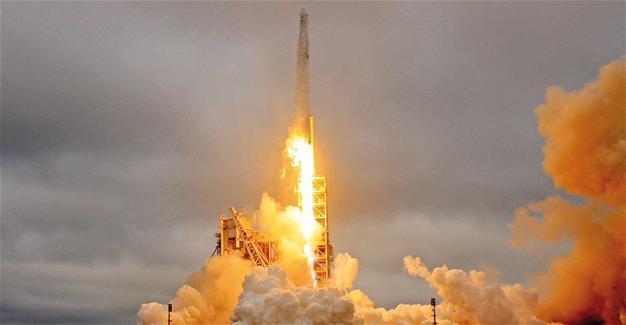SpaceX to send first paying tourists around moon next year

SpaceX plans to launch two paying passengers on a tourist trip around the moon next year using a spaceship under development for NASA astronauts and a heavy-lift rocket yet to be flown, the launch company announced on Feb. 27.
The launch of the first privately funded tourist flight beyond the orbit of the International Space Station is tentatively targeted for late 2018, Space Exploration Technologies Chief Executive Elon Musk told reporters on a conference call, Reuters reported.
Musk declined to identify the customers or say how much they would pay to fly on the weeklong mission, except to say that it is “nobody from Hollywood.”
He also said the two prospective space tourists, who know each other, have put down a “substantial” deposit and would undergo “extensive training before going on the mission.”
“I think there’s a market for one or two of these per year,” he said, estimating that space tourist fares charged by SpaceX could eventually contribute 10 to 20 percent of the company’s revenue.
Plans call for SpaceX’s two-person lunar venture to fly some 300,000 to 400,000 miles (480,000 to 640,000 km) from Earth past the moon before Earth’s gravity pulls the spacecraft back into the atmosphere for a parachute landing.
That trajectory would be similar to NASA’s 1968 Apollo 8 mission beyond the moon and back.
“This presents an opportunity for humans to return to deep space for the first time in 45 years and they will travel faster and further into the solar system than any before them,” Musk said.
Musk also said that if NASA decides it wants to be first in line for a lunar flyby mission, the U.S. space agency would take priority.
“Other flight teams have also expressed strong interest and we expect more to follow. Additional information will be released about the flight teams, contingent upon their approval and confirmation of the health and fitness test results,” Musk said.
The tourists will ride aboard the California-based company’s Crew Dragon capsule, which is scheduled for its first unmanned test flight later this year.
It is based on the design currently used to send cargo to the International Space Station, with upgrades to allow for human transport.
The capsule will launch atop SpaceX’s Falcon Heavy rocket, which is scheduled for its first test flight this summer.
The rocket “will be the most powerful vehicle to reach orbit after the Saturn V moon rocket,” Musk said.
“At five million pounds of liftoff thrust, Falcon Heavy is two-thirds the thrust of Saturn V and more than double the thrust of the next largest launch vehicle currently flying.”
Musk said the privately funded moon expedition would take place after his California-based company begins flying crew to the International Space Station for the National Aeronautics and Space Administration.
NASA is hoping those crew-ferrying flights begin by late 2018.
Musk said missions around the moon could provide practice for eventual human flights to Mars, the long-term goal of SpaceX.
Except for needed communications upgrades, the Dragon spaceship in development for NASA astronauts is well suited for lunar flyby missions, Musk added.
The launch would require licensing by the Federal Aviation Administration.
Musk - who co-founded PayPal and also heads Tesla Motors - is seen as the emerging leader of the modern commercial space industry, after becoming the first to send a private cargo carrier to the International Space Station in 2010.
The 45-year-old native of South Africa is a long-time space enthusiast, who is also outspoken about his vision to colonize Mars.
Last September he unveiled ambitious plans to establish a colony on the Red Planet by sending 100 humans at a time - starting in 2024.
 SpaceX plans to launch two paying passengers on a tourist trip around the moon next year using a spaceship under development for NASA astronauts and a heavy-lift rocket yet to be flown, the launch company announced on Feb. 27.
SpaceX plans to launch two paying passengers on a tourist trip around the moon next year using a spaceship under development for NASA astronauts and a heavy-lift rocket yet to be flown, the launch company announced on Feb. 27.